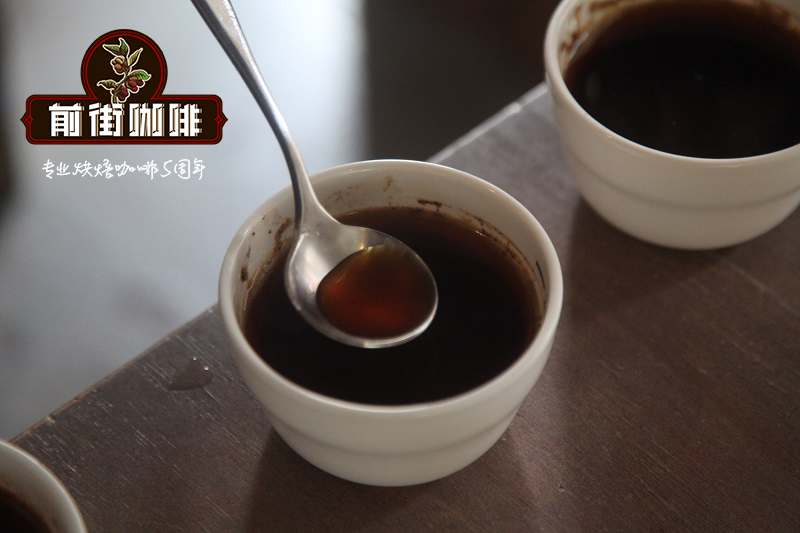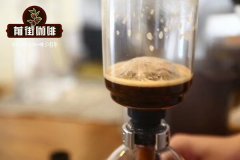Description of the flavor of Kenya KarieAB boutique single bean. What does Kenya AB mean?

Professional coffee knowledge exchange more coffee bean information please follow the coffee workshop (Wechat official account cafe_style)
Kenyan coffee AB Karie. The dry aroma has very obvious aromas of plum and apricot; it tastes clean and clear, with endless aromas of blackcurrant, tomato and berry.
Kenya Coffee KENYA
Kenya, located in East Africa, is one of the major coffee producing countries. More than 6 million people in the country are engaged in the coffee industry, mostly in the form of a combination of small farmers, wet treatment plants and cooperatives. Kenyan coffee is mainly treated by washing. Coffee trees are mostly planted in mountainous areas with an altitude of 1400 meters to 2000 meters above sea level. There are Ruiri, Thika, Kirinyaga and Mt in the producing areas. Kenya West, Nyeri, Kiambu and Muranga. Among them, the foothills of Mt.Kenya and Aberdare are the main producing areas. Kenyan coffee is graded according to particle size and flavor. The particle size of AA, AB and PB,AA is 17 mesh and 18 mesh, and AB is 15 order and 16 order. PB is PEABERRIES. If the flavor grade is TOP, PLUS and FAQ,FAQ-- "Fair to Average Quality", there will be some slight defective beans, but the flavor will not be affected.
The main varieties of Kenyan coffee are SL28 and SL34. It was cultivated and named by the "Scott Laboratories" laboratory in 1930. According to botanists in SL laboratory, SL28 and SL34 are genetic variants. Among them, SL28 has a mixed pedigree of French missionaries, mocha and Yemeni Tibica. The goal of cultivating SL28 was to mass produce coffee beans with high quality and resistance to diseases and insect pests. Although SL28 did not produce as much as expected, copper and broad bean-shaped beans have great sweetness, balance and complex flavor, as well as significant citrus and black plum characteristics. SL34 is similar to SL28 in flavor, with a heavier, fuller and cleaner finish than SL28, except for the complex acidity and great sweetness of the finish. SL34 has French missionaries, bourbon, and more Tibica ancestry. Dou looks similar to SL28, but is more adaptable to sudden heavy rain. It is these two important varieties that lead us to know the unique Kenyan coffee beans.
END
Important Notice :
前街咖啡 FrontStreet Coffee has moved to new addredd:
FrontStreet Coffee Address: 315,Donghua East Road,GuangZhou
Tel:020 38364473
- Prev

What is the meaning of Kenyan Mutika AATop? what brand of Kenyan coffee beans tastes good?
Professional coffee knowledge exchange more coffee bean information please follow the coffee workshop (Wechat official account cafe_style) production area: Nyeri Nieri varieties: SL 28 and SL 34 raw bean treatment: washing fermentation, African elevated sun roasting: medium roasting Medium Roast shows the best balance of Kenyan coffee, charming berry aromas and sour taste of ripe fruit, strong taste
- Next

Kenya RUMUKIA processing plant introduction _ Kenya Nieli producing area coffee how to drink?
Professional coffee knowledge exchange more coffee bean information please follow the coffee workshop (Wechat official account cafe_style) 2018 new season Kenyan coffee with the super Tambaya to start the season! Kenya Coffee Ritambaya processing Plant AA TOP two hand-selected special batches Kenya Nyeri Tambaya Factory AA TOP Double Handpick (30KG origin vacuum)
Related
- Detailed explanation of Jadeite planting Land in Panamanian Jadeite Manor introduction to the grading system of Jadeite competitive bidding, Red bid, Green bid and Rose Summer
- Story of Coffee planting in Brenka region of Costa Rica Stonehenge Manor anaerobic heavy honey treatment of flavor mouth
- What's on the barrel of Blue Mountain Coffee beans?
- Can American coffee also pull flowers? How to use hot American style to pull out a good-looking pattern?
- Can you make a cold extract with coffee beans? What is the right proportion for cold-extracted coffee formula?
- Indonesian PWN Gold Mandrine Coffee Origin Features Flavor How to Chong? Mandolin coffee is American.
- A brief introduction to the flavor characteristics of Brazilian yellow bourbon coffee beans
- What is the effect of different water quality on the flavor of cold-extracted coffee? What kind of water is best for brewing coffee?
- Why do you think of Rose Summer whenever you mention Panamanian coffee?
- Introduction to the characteristics of authentic blue mountain coffee bean producing areas? What is the CIB Coffee Authority in Jamaica?

